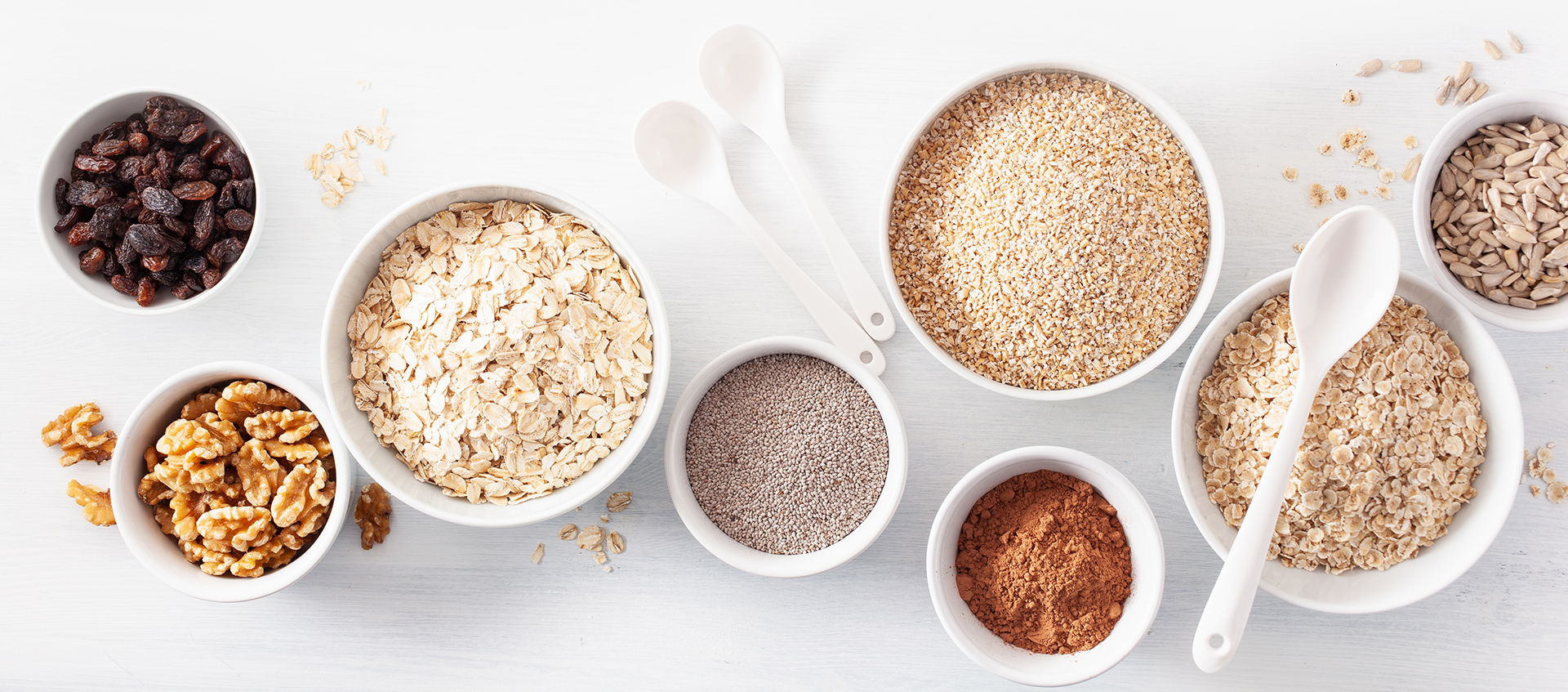| Definition | Dissolves in water and gastrointestinal fluids when it enters the stomach and intestines. It is transformed into a gel-like substance, which is digested by bacteria in the large intestine, releasing gases and few calories. | Does not dissolve in water and gastrointestinal fluids and remains more or less unchanged as it moves through the digestive tract. Because it is not digested at all, insoluble fiber is not a source of calories. |
| Main Sources | Oat bran, nuts, seeds, beans, and some fruits and vegetables. | Whole grains, vegetables, and fruit skins. |
| Examples of dietary fiber | Oats, peas, beans, apples, citrus fruit, carrots, barley, psyllium. | Whole-wheat flour, wheat bran, nuts, beans, cauliflower, green beans, potatoes. |
| Example of functional fiber | β-glucan, galactomannan, pectin, psyllium, inulin, and resistant starch, etc. | Cellulose, hemicellulose, chitosan, lignin, etc. |
| Health Benefits |
- Lowering fat absorption and helping weight management: As a thick, spread-out gel, soluble fiber blocks fats that would otherwise be digested and absorbed.
- Lowering cholesterol: Soluble fiber prevents some dietary cholesterol from being broken down and digested. Over time, soluble fiber can help lower cholesterol levels or the amount of free cholesterol in the blood.
- Stabilizing blood sugar (glucose) levels: Just as it prevents fats from being absorbed, soluble fiber slows down the digestion rate of other nutrients, including carbohydrates. This means meals containing soluble fiber are less likely to cause sharp spikes in blood sugar levels and may prevent them.
- Reducing the risk of cardiovascular disease: By lowering cholesterol levels, stabilizing blood sugars, and decreasing fat absorption, regularly eating soluble fiber may reduce the risk of heart disease and circulatory conditions.
- Feeding healthy gut bacteria: Some soluble fiber-rich foods feed gut bacteria, as it is fermentable in the colon, and so it helps the bacteria thrive longer.
- Feeling satiated or full longer after meals: Soluble fiber slows down how quickly foods are digested, meaning most people feel full longer after fiber-rich meals. Insoluble fiber physically fills up space in the stomach and intestines, furthering the sensation of being full. These properties can help people manage their weight.
- Helping lower disease risk: Due to fiber’s many health benefits, a high-fiber diet is associated with a lower risk of many diseases, including obesity, cardiovascular disease, diabetes, metabolic syndrome and others.
|
- Preventing constipation: As an indigestible material, insoluble fiber sits in the gastrointestinal tract, absorbing fluid and sticking to other byproducts of digestion that are ready to be formed into the stool. Its presence speeds up the movement and processing of waste, helping prevent gastrointestinal blockage and constipation or reduced bowel movements.
- Lowering the risk of diverticular disease: By preventing constipation and intestinal blockages, insoluble fiber helps reduce the risk of developing small folds and hemorrhoids in the colon. It may also reduce the risk of colorectal cancer.
|

